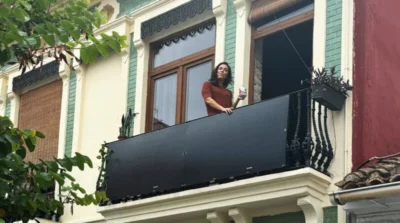Who needs a roof when you can use balcony solar for apartments

Lots of people, especially city dwellers and renters, don’t have rooftops where they can install solar panels to generate some of the electricity they use in their daily lives. Community solar offers a partial solution for some, but it is not available everywhere. In Germany, more than 1.5 million people have installed Balkonkraftwerke, which translates as “balcony power plants.” Almost every apartment has a balcony with a railing to keep folks from tumbling into the street below. If it gets any sun exposure during the day, balcony solar panels can be mounted to those railings to make electricity that helps power a home.
It may not be as much power as a rooftop system but is still around 300 W which does offset electricity costs a bit, and there is a battery to also store excess energy.
What is different from a rooftop system is that it is easily portable, so you can take it with if you move, or even if you go off camping. If you live in an area subject to hail, then these are easy to take inside when you need to. It usually also does not require professional electricians to install it.
And as far as the electricity grid goes, in Germany there are already more than 500,000 of these installations, so that adds up to quite a saving anyway on the grid side.
See cleantechnica.com/2024/12/21/g…
#Blog, #balconysolar, #environment, #solarenergy, #technology









